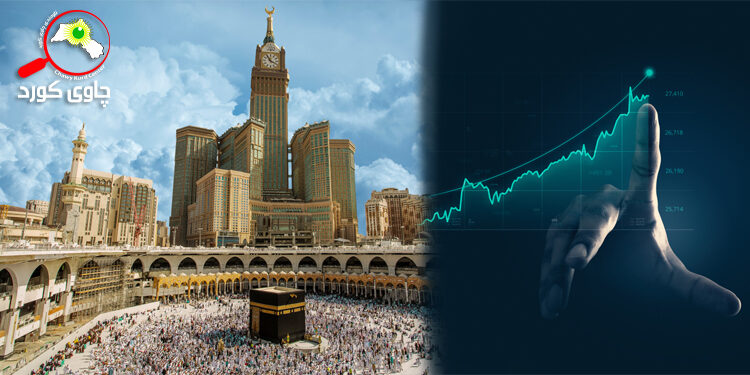Investment sides of Hajj and Umrah in economic field “Hajj Fund in Malaysia as an example”
The Pilgrimage or visiting the Makkah is one of the pillars of Islam and it has a particular spiritual and material importance for Muslims. Muslims must visit Makkah once in their lifetime. Recently a type of religious tourist has emerged in Kurdistan, known as “Umrah”, whose numbers are increasing day by day with high economic costs. The Kurdistan regional government can take advantage of it. A dispersion of income sources is one of the strong and developed economic factors. Tourism in all forms consist (12%) of the world’s income. Also there is living examples such as Malaysia, which can take benefits from it. In these few lines, I try to demonstrate on importance of this fundamental pillar of Islam, not for those who become guests, but for those who visit the Makkah. I also show roles of the Hajj in the economic sector and the provision of social justice.
Annually, in order to implement the Hajj pilgrimage, millions prepare themselves and visit there. The host country to organize hajj ceremonies and protect their goods and the spirit of guests has taken many steps, which in this way spends a lot of time, efforts and money; it will surely get more that has impacts on the country’s economy and culture. It is noteworthy that the institutions and religious institutions in the Kurdistan Region have not done economic research in this area. In this regard, Malaysia has shown a best example through the Hajj Fund that can be seen as a pioneer.
Malaysia’s economic philosophy
The idea of “Malaysia’s” economic philosophy is based on “economic growth should be an equal income-based cause has created and run” which means that economic growth should effectively affect the poor and unemployed. As well as reflect well on improving their lives, providing access to basic living needs such as food, housing, learning, security, and so on.
This philosophy appears in the policy of tax receipts, improving the country’s growth in decreasing poverty, increasing spending on public income for the poor.
“The idea of the Tabung hajj”
The Hajj fund in Malaysia is called Tabung haji, which means the local money of the country, has kept in. Before this idea, the country’s believers would not have put their money into government banks. They were hiding and carrying money under earth. The Hajj fund was later established, which at the same time did savings and investments. In 1959, the country’s famous economist, Anqu Aziz, at Malaya University, presented the idea of the Hajj Fund. In order to provide cost pilgrims travel, he called for founding an institution to pay attention to the saving of pilgrims. At the same time, the institution invests in the wealth in a way that is in the interest of participants. The project’s plan was submitted to Tanqo AbdulRahman in 1959, “the founder and prime minister of Malaysia at that time”, and then the project was submitted to parliament, and the parliament approved the idea of the project. In 1962, when Sheikh Azhar (Mahmoud Shaltut) visited the country, the idea of the Hajj fund was made available, and the work was legally discussed. In response, Sheikh Azhar approved the plan and said: “Believers will benefit significantly from this Hajj Fund!” He asked for implementing the plan quickly. The box was created in 1962 and began to work on October 30, 1963.
“The works of the Tabung haji”
According to 2003 statistics, the Hajj Fund is more than 2.8 billion U.S. dollars, with 4.5 million partners running its work. There are also 100 agents within the country, increasing the number of participants annually by 27%, which is higher than the population growth of 2.5%. The Hajj Fund annually and at a high level of service work in the fields of raising, health, and delivering pilgrims to perform the Hajj pilgrimage, which is 25,000 pilgrims annually. This number is shares of Malaysia according to the state’s population, Saudi Arabia yearly allows visitors to perform the Pilgrimage.
“The purpose of the Hajj box.”
Compared to neighboring of Malaysia, the Hajj Fund has played a crucial role in decreasing cost of the Hajj, currently costing Hajj pilgrimage of Malaysians is ($2,300), while in Singapore it is ($5,300), in Indonesia ($3,200). The Hajj fund provides good services for participants. In this regard, it only receives transportation and food expenses from pilgrims. The administrative side is responsible for the Hajj fund, and all health services, passport issues and religious instructions are free. In the Kurdistan Region, more than (6,000) pilgrims are implementing Hajj and Umrah annually, each of them spends between ($1,500) and ($4,000). If we estimate as (2,500) for each pilgrim, thus they spent (15) fifteen million dollars annually and have no economic benefits for the region.
If this amount is kept and invested in a place similar to the Malaysian Hajj fund, it will undoubtedly have a good impact on the economy and culture of the Kurdish community. Unfortunately, economic philosophy in Kurdistan is built in a way that Kurdish individuals and institutions still desire to do a work which provide them high amount of incomes to them at a short period. This view is contrary to investment and remains in the labor market for a long time.



























































